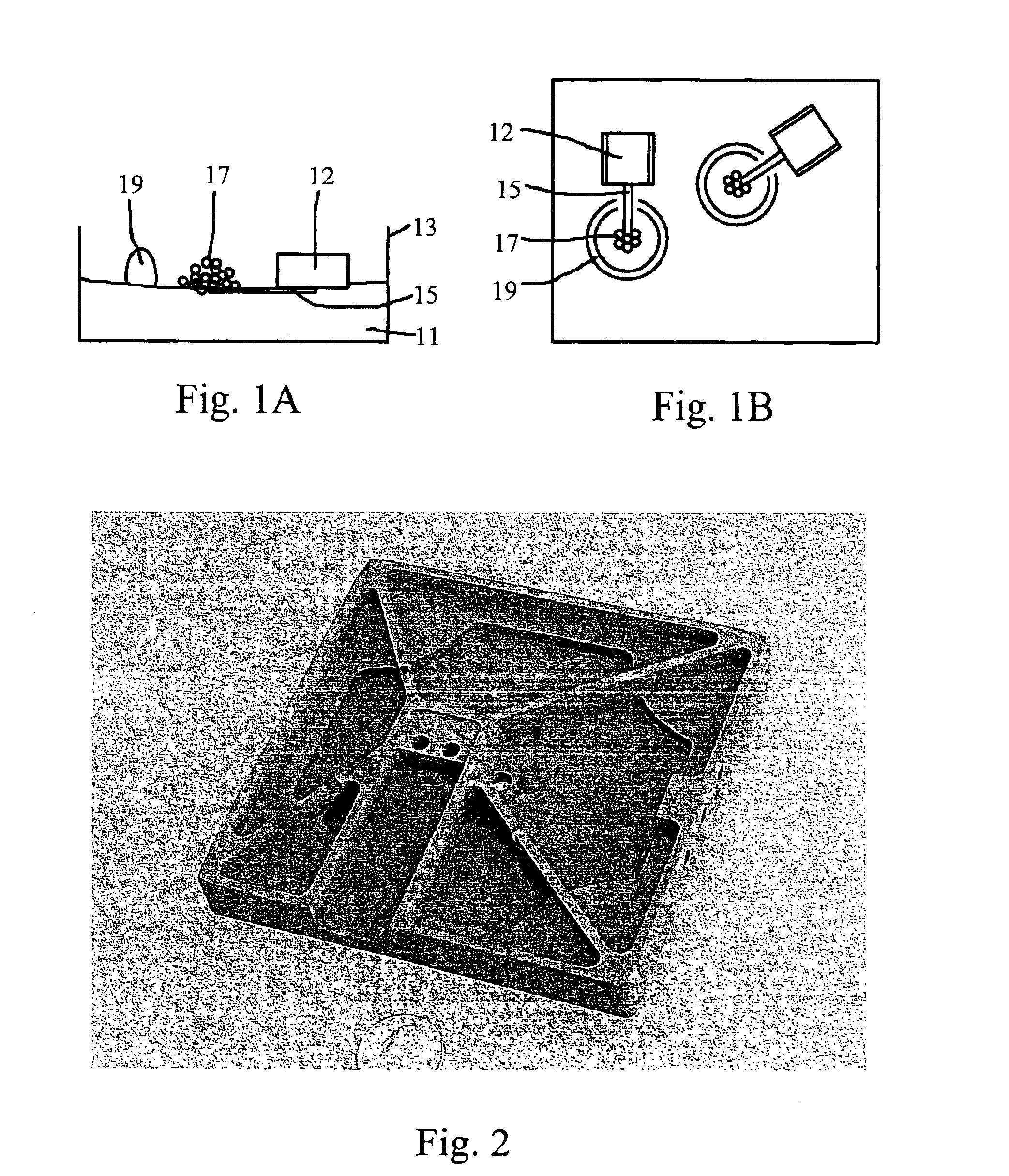Silicon carbide composites, and methods for making same
a technology of silicon carbide and composite materials, which is applied in the field of composite materials and the improvement of composite materials, can solve the problems of chemical change, and achieve the effects of reducing the melting point of infiltrants, enhancing infiltration, and ensuring the quality of the composite materials
- Summary
- Abstract
- Description
- Claims
- Application Information
AI Technical Summary
Benefits of technology
Problems solved by technology
Method used
Image
Examples
example 1
[0054]This example demonstrates the production of a reaction bonded Si / SiC composite body. More specifically, this Example demonstrates the infiltration of substantially pure silicon into a silicon carbide preform containing an interconnected carbon phase derived from a resinous precursor.
[0055]First, a preform was prepared as follows. One hundred parts by weight of CRYSTOLON blocky (regular), green silicon carbide particulate (St. Gobain / Norton Industrial Ceramics, Worchester, Mass.) was combined with fifteen parts of Karo corn syrup (CPC International Inc., Englewood Cliffs, N.J.) by mixing. The silicon carbide particulate content consisted of about 70 percent having a median particle size of about 44 microns (Grade F 240), and the balance having a median particle size of about 13 microns (Grade F 500). The mixing was conducted in a Model RV02 Eirich high shear mixer as follows: First the SiC particulates were mixed for 2 minutes on the “low” speed. Then half the corn syrup was ad...
example 2
[0063]The technique of Example 1 was repeated, with a major change being that the infiltrant featured aluminum substituted for about half of the mass of silicon. Thus, excluding impurities, the infiltrant was about 50 percent by weight silicon and about 50 percent aluminum. Also, in this Example the infiltration was conducted at a lower temperature than in Example 1.
[0064]The masses of the preform and infiltrant were slightly different from those of Example 1, at 44.8 grams and 20 grams, respectively. As for the differences in the heating schedule, the lay-up of the present Example was heated in vacuo from about ambient temperature to a temperature of about 1000 C. at a rate of about 200 C. per hour. After maintaining a temperature of about 1000 C. for about 1 hour, the temperature was further increased to a temperature of about 1150 C. at a rate of about 150 C. per hour. After maintaining a temperature of about 1150 C. for about 4 hours, the lay-up was cooled to near-ambient temper...
example 3
[0066]This example demonstrates the effect of infiltrant chemistry on some selected physical properties of a silicon carbide composite body.
[0067]Two identical preforms were made using the materials and procedures similar to those detailed in Example 1. Following pyrolysis, each preform comprised by volume about 70 percent SiC and by weight about 3 percent elemental carbon.
[0068]One of the preforms, Sample A, was infiltrated according to the infiltrant composition and thermal processing schedule detailed in Example 1. The other preform, Sample B, was infiltrated according to the infiltrant composition and thermal processing schedule described in Example 2. Thus, Sample A was infiltrated with nominally pure silicon, and Sample B was infiltrated with nominally Si-50Al alloy. Following infiltration, the resulting SiC composite bodies were characterized. Selected properties are provided in Table I.
[0069]
TABLE IPropertyTestSample ASample BSiC content (vol. %)QIA73 + / − 376 + / − 2Density (g...
PUM
| Property | Measurement | Unit |
|---|---|---|
| size | aaaaa | aaaaa |
| volume change | aaaaa | aaaaa |
| volume change | aaaaa | aaaaa |
Abstract
Description
Claims
Application Information
 Login to View More
Login to View More - R&D
- Intellectual Property
- Life Sciences
- Materials
- Tech Scout
- Unparalleled Data Quality
- Higher Quality Content
- 60% Fewer Hallucinations
Browse by: Latest US Patents, China's latest patents, Technical Efficacy Thesaurus, Application Domain, Technology Topic, Popular Technical Reports.
© 2025 PatSnap. All rights reserved.Legal|Privacy policy|Modern Slavery Act Transparency Statement|Sitemap|About US| Contact US: help@patsnap.com


